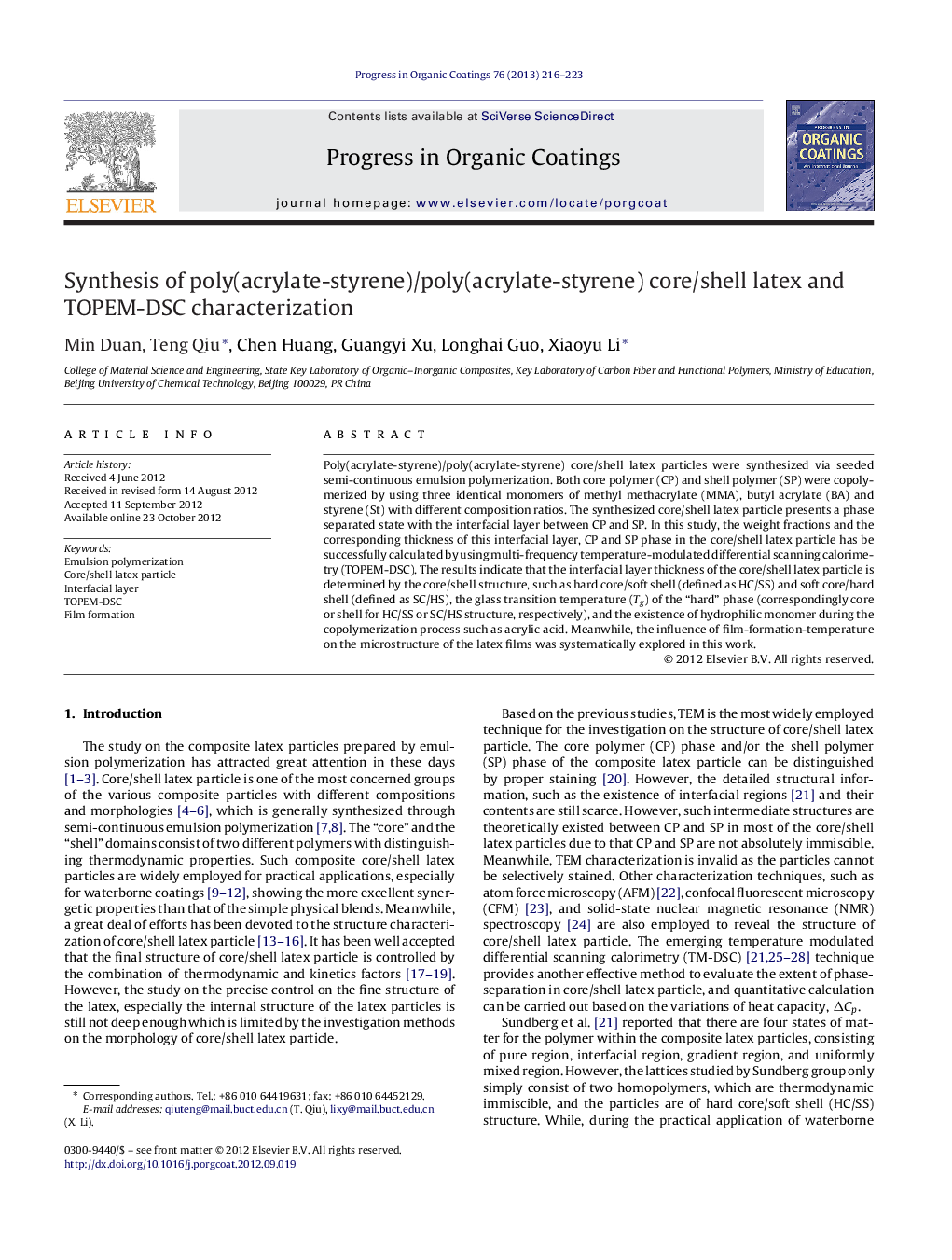| Article ID | Journal | Published Year | Pages | File Type |
|---|---|---|---|---|
| 692804 | Progress in Organic Coatings | 2013 | 8 Pages |
Poly(acrylate-styrene)/poly(acrylate-styrene) core/shell latex particles were synthesized via seeded semi-continuous emulsion polymerization. Both core polymer (CP) and shell polymer (SP) were copolymerized by using three identical monomers of methyl methacrylate (MMA), butyl acrylate (BA) and styrene (St) with different composition ratios. The synthesized core/shell latex particle presents a phase separated state with the interfacial layer between CP and SP. In this study, the weight fractions and the corresponding thickness of this interfacial layer, CP and SP phase in the core/shell latex particle has be successfully calculated by using multi-frequency temperature-modulated differential scanning calorimetry (TOPEM-DSC). The results indicate that the interfacial layer thickness of the core/shell latex particle is determined by the core/shell structure, such as hard core/soft shell (defined as HC/SS) and soft core/hard shell (defined as SC/HS), the glass transition temperature (Tg) of the “hard” phase (correspondingly core or shell for HC/SS or SC/HS structure, respectively), and the existence of hydrophilic monomer during the copolymerization process such as acrylic acid. Meanwhile, the influence of film-formation-temperature on the microstructure of the latex films was systematically explored in this work.
► P(MMA-BA-St)/P(MMA-BA-St) core/shell latex particles were synthesized. ► The phase structures of such particles were characterized by TOPEM-DSC. ► The geometric parameters of such particles were calculated. ► The interfacial region between the core and the shell existed. ► The influence on interfacial region was investigated.
